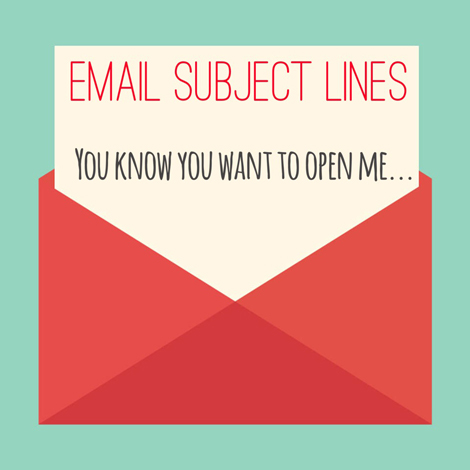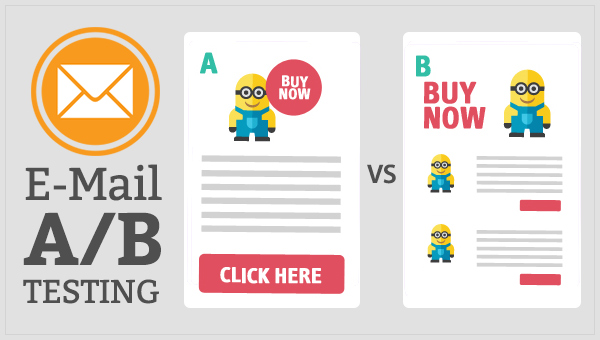How to perfect your Email Marketing campaign
Reminder: What is email marketing?
Email marketing involves sending a commercial message to a group of prospects or current clients using email.
Every individual receives hundreds of emails per week so it’s hard for businesses to get through this noise. Average email opens are at 25%…not a lot you’re probably thinking. So this is why you need to have the best email marketing strategy so that your email becomes the ‘chosen one’ by readers. I reveal the ways to perfect your email marketing down to a tee.
1. Build a solid email list
Forget that ‘ilovemyponyxoxo@hotmail.co.uk' email address.
This may seem obvious but you can’t send an email to just anybody. You need to choose the right audience that is firstly, relevant to your business but also to the specific email marketing campaign you want to launch. For example, you offer a SaaS software to manage employees’ holidays. Sending a promotional email to anyone that works within in a company probably won’t get you much of a return but targeting HR Managers or Business owners would be as they’re the people that could actually use and put your software in place.
My other piece of advice, especially if you’re starting your email list from scratch, is to focus on organic list building. What I mean here is getting emails without buying them from a database provider, for example from prospecting at events or people subscribing to your blog. Organic list building will increase email opens and click-through rates because they’re addresses that are actually used and are sure to not be spam ones. An example of growing your list organically is to include opt-ins on your website. Opt-ins are about inciting site visitors to provide their email address so that you can send them information. These could be newsletter sign-ups, getting informed of site updates, new blog posts or signing-up to the service.
REMEMBER
- Choose the right audience that is relevant to your business
- Focus on organic list building to increase email opens and click-through rates
- Think about including different opt-ins across your website
2. Set campaign goals
Make sure you’re going in the right direction.
Like any campaign whether it be emailing, SEO or advertising, you need to set out clear objectives i.e. what do you want to achieve from your emailing campaign. There’s no point in sending an email for the sake of it, you need to have a reason and a clear goal of what you expect to get in return. Examples of potential campaign goals could be:
- Promoting an offer on a certain product or service
- Communicating and marketing a new product or service
- Informing clients and/or prospects about a change in your pricing model
Setting your goals thus determines the type of emails you want to send and makes you plan what will be sent and when. For example, you’re an e-commerce business selling shoes and you have a 2 week offer on all your leather boots. Your campaign would involve 3 emails; one at the beginning informing recipients of the promotion, another one one week later reminding them and a final one two days before, gently (but also persuasively) telling them not to miss out on the offer!
REMEMBER
- Set clear objectives of your email campaign i.e. what you want to achieve
- Define the type of emails you want to send (promotion, information, site update)
- Plan the number of emails you want to send (e.g. including follow-ups)
3. Have an amazing subject line
...or you could use hypnosis to get your email opened.

The email subject line is what is going to get your email opened. It’s the first thing your readers will see in their inbox and so you just have a matter of seconds to convince them that your email is worth opening over the rest. In other words, it needs to impress!
Think about the amount of emails you receive in a day (work ones not included here  ), how many do you actually open? Personally my open rate is probably around 10% and it’s the subject line that makes me decide whether I swipe to delete or click to open.
), how many do you actually open? Personally my open rate is probably around 10% and it’s the subject line that makes me decide whether I swipe to delete or click to open.
Here are some techniques to avoid when creating your subject line:
- CAPITAL LETTERS: a subject line entirely in capitals letters shouts out (quite literally) promotion and spam, and you’ll be at a high risk of recipients marking them as spam for the foreseeable future.
- Too many !!! and ???: this adds to the ‘shoutiness’ of an email. Instead, use one exclamation mark occasionally on your email subject lines.
- Spam trigger words: words such as buy, subscribe, click here are detected by email services as spam and so even if the email provider’s spam filter doesn’t mark them, an individuals spam filter will.
- Spelling mistakes: nothing looks less professional than a misspelt email yet alone a misspelt subject line so make sure you re-read it at least three times before sending it.
Creating an amazing subject line is about catching the recipient’s attention. Keep it short and sweet, you have approximately 50 characters to play with, and show the recipients the benefit they’ll get from opening your email. If they don’t feel they’ll get something beneficial from it, your email won’t be opened.
REMEMBER
- The subject line is the first thing the reader will see
- Avoid capital letters, exclamation marks, spam trigger words and check your spelling
- It needs to catch the reader’s attention in 50 characters
4. Don’t go over the top
Unlike at Halloween when you can never go too over the top.
If you’ve caught your recipient’s attention with your subject line it’s now time to keep them interested with your email marketing copy. For best results, keep your copy clear, short and simple. Only include information that is valuable to your readers with a few main points so that the recipient can understand why this email could be of interest to them. If you want your email to be longer then make sure it’s scannable, what I mean here is that the recipient can still understand the contents of the email while scrolling.
Remember to also include at least one CTA (call-to-action) at the end of the email. Your CTA reflects the one thing you want your recipient to do once they’ve read your email. Therefore always include one at the end of your copy and if relevant, include another at the beginning or middle. Make sure they’re short and clear, and if your copy is right then there’s no reason for the recipients not to click on the link  .
.
My final piece of advice is to always include your logo at the top of the email. Recipients will recognize your logo and be reassured that they were rightly sent this email.
REMEMBER
- Keep your email simple and clear
- Only include information that will be valuable to your readers
- Include a few CTAs and your logo
5. Test your emails before sending them
Testing, testing, 1,2, 3.
Ask yourself this question: have you ever sent an email out with a typo? If yes then you’ll know how bad it feels, if no, then touch wood it won’t happen to you.
As much as the email list, subject line, email copy are important, so is testing your emails. Testing your emails shows you how the email will be displayed in the inbox as well as the chance to check for any spelling mistakes or broken links in the CTAs. What’s also really useful is that most email platforms give you the option of sending email tests to yourself. I’d also suggest sending a test to one or two of your colleagues. Getting someone that hasn’t seen the email before is a good of way of seeing if your email is pertinent enough and doesn’t include any mistakes that you may have missed yourself.
Remember that if an email doesn’t look professional, recipients won’t trust the source. It takes 30 seconds to test an email but 1 second to lose your great reputation.
REMEMBER
- Test your emails to see how they’re displayed in an inbox and for errors within the email
- Readers won’t trust emails that don’t look professional
6. Measure your performance
Aim for 10s across the whole board.
If you can’t measure your email marketing campaign then you have no idea whether your efforts have paid off and if it’s worth doing it again in the future. It’s important to measure the number of email opens, link clicks, bounces and unsubscribes for each of your campaigns so that you get insights into whether it was a success or not.
Through whichever email platform you use to send your emails, you’ll be able to see which links were most clicked on in the email, and areas of improvement for future campaigns. For example, your email opens were high (that email subject line must have been good  ) but link clicks within the email copy were low. This shows you that your email copy needs working on to incite readers to do what your email set out to do: click onto your website.
) but link clicks within the email copy were low. This shows you that your email copy needs working on to incite readers to do what your email set out to do: click onto your website.
This is also very important if you carry out A/B testing. As a reminder, A/B testing is when you design two email templates for the exact same subject to see which one is the most effective (in terms of opens and clicks). You send them to a small number of recipients and whichever template works best is sent to the rest of the recipients in the contacts list. Measuring the performance of both templates shows you what type of email design gets the recipients to engage with your email. Again this is really useful information to know for any future email campaigns.

REMEMBER
- It’s important to measure the number of opens, clicks, bounces and unsubscribes for each of your campaigns
- It helps you see which links were most clicked on and areas of improvement for future campaigns
Conclusion
Email marketing may seem easy at first regard but it can take time building your list and getting your emails just right. This is why it’s important to test your emails to see what works or doesn’t in order to provide direction for the future.
